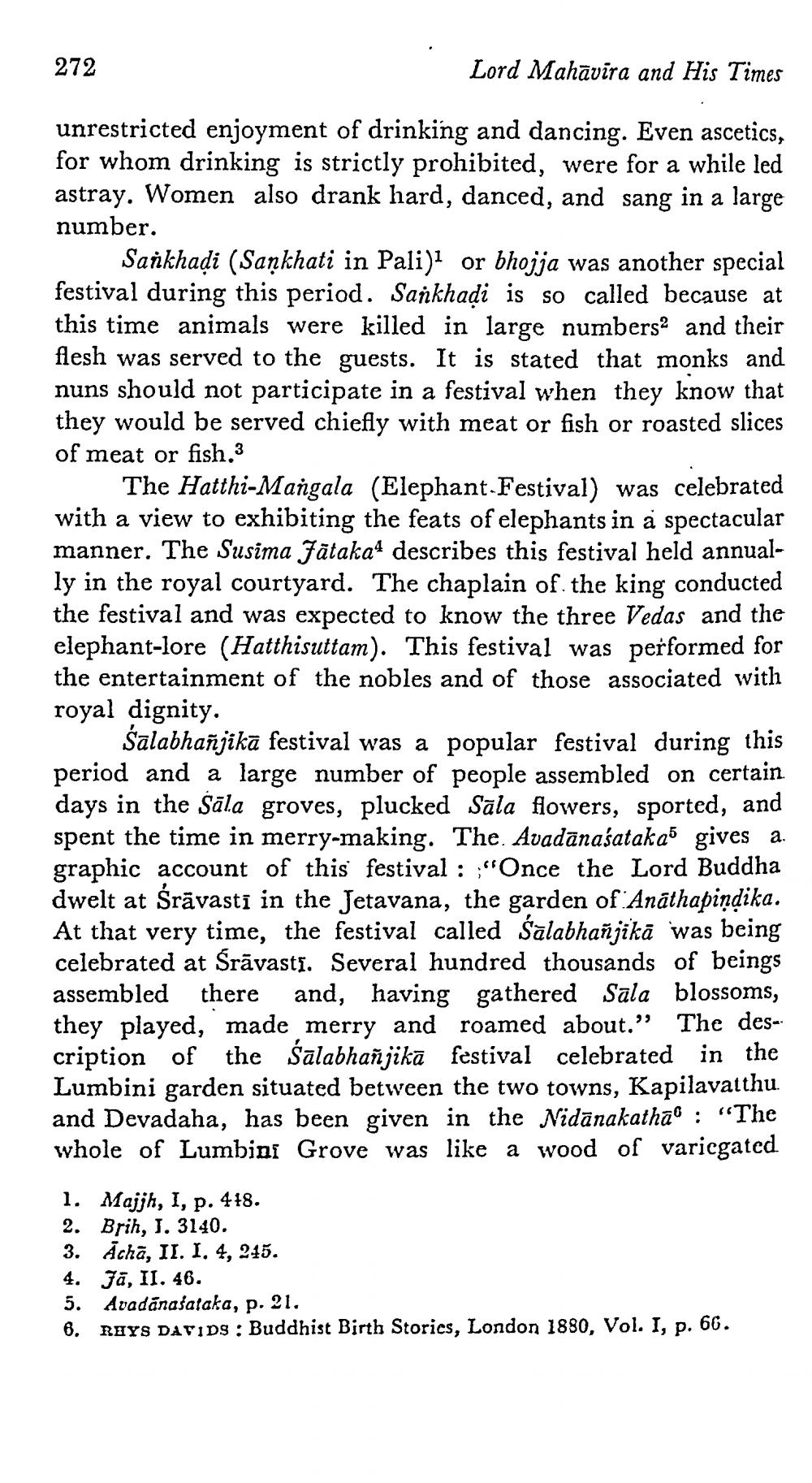________________
Lord Mahavira and His Times
unrestricted enjoyment of drinking and dancing. Even ascetics, for whom drinking is strictly prohibited, were for a while led astray. Women also drank hard, danced, and sang in a large number.
272
Sankhadi (Sankhati in Pali)1 or bhojja was another special festival during this period. Sankhaḍi is so called because at this time animals were killed in large numbers and their flesh was served to the guests. It is stated that monks and nuns should not participate in a festival when they know that they would be served chiefly with meat or fish or roasted slices of meat or fish.3
The Hatthi-Mangala (Elephant Festival) was celebrated with a view to exhibiting the feats of elephants in a spectacular manner. The Susima Jātaka1 describes this festival held annually in the royal courtyard. The chaplain of the king conducted the festival and was expected to know the three Vedas and the elephant-lore (Hatthisuttam). This festival was performed for the entertainment of the nobles and of those associated with royal dignity.
Śālabhañjikā festival was a popular festival during this period and a large number of people assembled on certain days in the Sāla groves, plucked Sala flowers, sported, and spent the time in merry-making. The. Avadānasataka5 gives a graphic account of this festival: "Once the Lord Buddha dwelt at Śrāvasti in the Jetavana, the garden of Anathapindika. At that very time, the festival called Śālabhañjikā was being celebrated at Śrāvasti. Several hundred thousands of beings assembled there and, having gathered Sala blossoms, they played, made merry and roamed about." The description of the Salabhañjikā festival celebrated in the Lumbini garden situated between the two towns, Kapilavatthu. and Devadaha, has been given in the Nidanakathā" : "The whole of Lumbini Grove was like a wood of variegated.
1. Majjh, I, P. 418. 2. Brih, I. 3140.
3. Acha, II. I. 4, 245.
4. Ja, II. 46.
5.
6.
Avadanasataka, p. 21.
RHYS DAVIDS: Buddhist Birth Stories, London 1880, Vol. I, p.
66.




